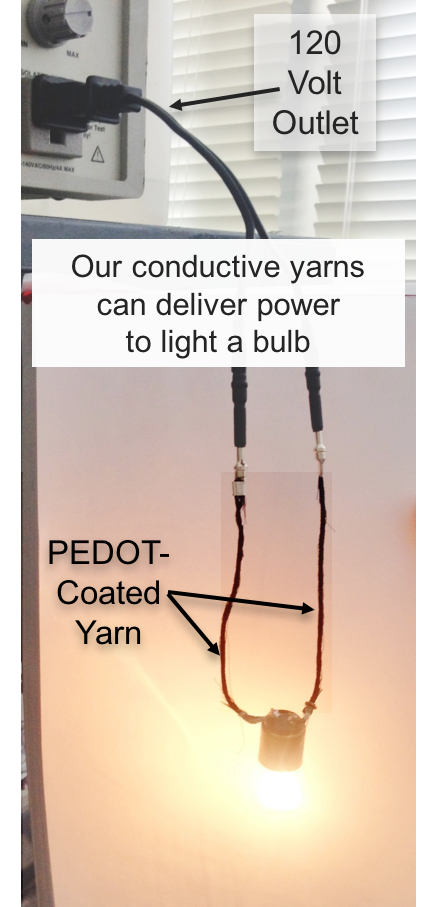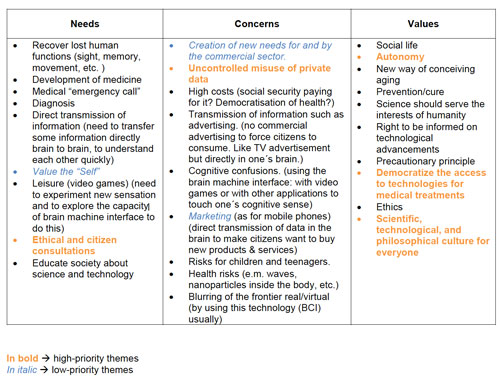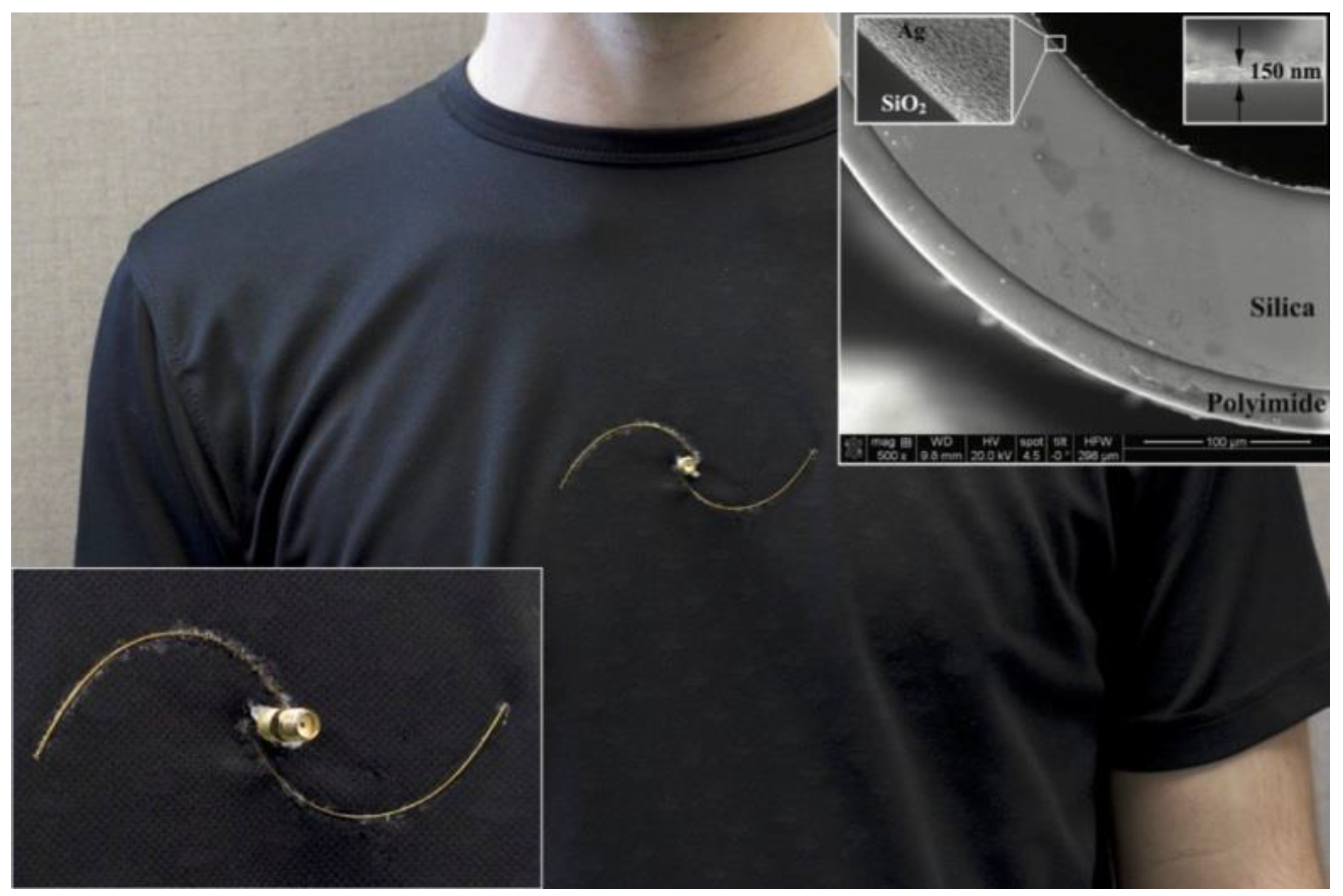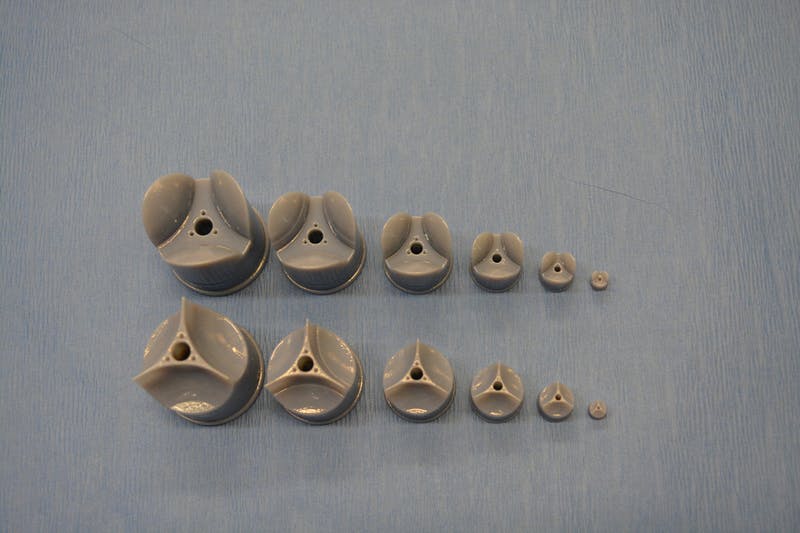This would usually be a simple event announcement but with the advent of a new, related (in my mind if no one else’s) development on Facebook, this has become a roundup of sorts.
Facebotlish (Facebook’s chatbots create their own language)
The language created by Facebook’s chatbots, Facebotlish, was an unintended consequence—that’s right Facebook’s developers did not design a language for the chatbots or anticipate its independent development, apparently. Adrienne LaFrance’s June 20, 2017 article for theatlantic.com explores the development and the question further,
Something unexpected happened recently at the Facebook Artificial Intelligence Research lab. Researchers who had been training bots to negotiate with one another realized that the bots, left to their own devices, started communicating in a non-human language.
In order to actually follow what the bots were saying, the researchers had to tweak their model, limiting the machines to a conversation humans could understand. (They want bots to stick to human languages because eventually they want those bots to be able to converse with human Facebook users.) …
Here’s what the language looks like (from LaFrance article),
…
Here’s an example of one of the bot negotiations that Facebook observed:Bob: i can i i everything else . . . . . . . . . . . . . .
Alice: balls have zero to me to me to me to me to me to me to me to me to
Bob: you i everything else . . . . . . . . . . . . . .
Alice: balls have a ball to me to me to me to me to me to me to me
Bob: i i can i i i everything else . . . . . . . . . . . . . .
Alice: balls have a ball to me to me to me to me to me to me to me
Bob: i . . . . . . . . . . . . . . . . . . .
Alice: balls have zero to me to me to me to me to me to me to me to me to
Bob: you i i i i i everything else . . . . . . . . . . . . . .
Alice: balls have 0 to me to me to me to me to me to me to me to me to
Bob: you i i i everything else . . . . . . . . . . . . . .
Alice: balls have zero to me to me to me to me to me to me to me to me to
It is incomprehensible to humans even after being tweaked, even so, some successful negotiations can ensue.
Facebook’s researchers aren’t the only one to come across the phenomenon (from LaFrance’s article; Note: Links have been removed),
Other AI researchers, too, say they’ve observed machines that can develop their own languages, including languages with a coherent structure, and defined vocabulary and syntax—though not always actual meaningful, by human standards.
In one preprint paper added earlier this year [2017] to the research repository arXiv, a pair of computer scientists from the non-profit AI research firm OpenAI wrote about how bots learned to communicate in an abstract language—and how those bots turned to non-verbal communication, the equivalent of human gesturing or pointing, when language communication was unavailable. (Bots don’t need to have corporeal form to engage in non-verbal communication; they just engage with what’s called a visual sensory modality.) Another recent preprint paper, from researchers at the Georgia Institute of Technology, Carnegie Mellon, and Virginia Tech, describes an experiment in which two bots invent their own communication protocol by discussing and assigning values to colors and shapes—in other words, the researchers write, they witnessed the “automatic emergence of grounded language and communication … no human supervision!”
The implications of this kind of work are dizzying. Not only are researchers beginning to see how bots could communicate with one another, they may be scratching the surface of how syntax and compositional structure emerged among humans in the first place.
LaFrance’s article is well worth reading in its entirety especially since the speculation is focused on whether or not the chatbots’ creation is in fact language. There is no mention of consciousness and perhaps this is just a crazy idea but is it possible that these chatbots have consciousness? The question is particularly intriguing in light of some of philosopher David Chalmers’ work (see his 2014 TED talk in Vancouver, Canada: https://www.ted.com/talks/david_chalmers_how_do_you_explain_consciousness/transcript?language=en runs roughly 18 mins.); a text transcript is also featured. There’s a condensed version of Chalmers’ TED talk offered in a roughly 9 minute NPR (US National Public Radio) interview by Gus Raz. Here are some highlights from the text transcript,
So we’ve been hearing from brain scientists who are asking how a bunch of neurons and synaptic connections in the brain add up to us, to who we are. But it’s consciousness, the subjective experience of the mind, that allows us to ask the question in the first place. And where consciousness comes from – that is an entirely separate question.
DAVID CHALMERS: Well, I like to distinguish between the easy problems of consciousness and the hard problem.
RAZ: This is David Chalmers. He’s a philosopher who coined this term, the hard problem of consciousness.
CHALMERS: Well, the easy problems are ultimately a matter of explaining behavior – things we do. And I think brain science is great at problems like that. It can isolate a neural circuit and show how it enables you to see a red object, to respondent and say, that’s red. But the hard problem of consciousness is subjective experience. Why, when all that happens in this circuit, does it feel like something? How does a bunch of – 86 billion neurons interacting inside the brain, coming together – how does that produce the subjective experience of a mind and of the world?
RAZ: Here’s how David Chalmers begins his TED Talk.
(SOUNDBITE OF TED TALK)
CHALMERS: Right now, you have a movie playing inside your head. It has 3-D vision and surround sound for what you’re seeing and hearing right now. Your movie has smell and taste and touch. It has a sense of your body, pain, hunger, orgasms. It has emotions, anger and happiness. It has memories, like scenes from your childhood, playing before you. This movie is your stream of consciousness. If we weren’t conscious, nothing in our lives would have meaning or value. But at the same time, it’s the most mysterious phenomenon in the universe. Why are we conscious?
RAZ: Why is consciousness more than just the sum of the brain’s parts?
CHALMERS: Well, the question is, you know, what is the brain? It’s this giant complex computer, a bunch of interacting parts with great complexity. What does all that explain? That explains objective mechanism. Consciousness is subjective by its nature. It’s a matter of subjective experience. And it seems that we can imagine all of that stuff going on in the brain without consciousness. And the question is, where is the consciousness from there? It’s like, if someone could do that, they’d get a Nobel Prize, you know?
RAZ: Right.
CHALMERS: So here’s the mapping from this circuit to this state of consciousness. But underneath that is always going be the question, why and how does the brain give you consciousness in the first place?
(SOUNDBITE OF TED TALK)
CHALMERS: Right now, nobody knows the answers to those questions. So we may need one or two ideas that initially seem crazy before we can come to grips with consciousness, scientifically. The first crazy idea is that consciousness is fundamental. Physicists sometimes take some aspects of the universe as fundamental building blocks – space and time and mass – and you build up the world from there. Well, I think that’s the situation we’re in. If you can’t explain consciousness in terms of the existing fundamentals – space, time – the natural thing to do is to postulate consciousness itself as something fundamental – a fundamental building block of nature. The second crazy idea is that consciousness might be universal. This view is sometimes called panpsychism – pan, for all – psych, for mind. Every system is conscious. Not just humans, dogs, mice, flies, but even microbes. Even a photon has some degree of consciousness. The idea is not that photons are intelligent or thinking. You know, it’s not that a photon is wracked with angst because it’s thinking, oh, I’m always buzzing around near the speed of light. I never get to slow down and smell the roses. No, not like that. But the thought is, maybe photons might have some element of raw subjective feeling, some primitive precursor to consciousness.
RAZ: So this is a pretty big idea – right? – like, that not just flies, but microbes or photons all have consciousness. And I mean we, like, as humans, we want to believe that our consciousness is what makes us special, right – like, different from anything else.
CHALMERS: Well, I would say yes and no. I’d say the fact of consciousness does not make us special. But maybe we’ve a special type of consciousness ’cause you know, consciousness is not on and off. It comes in all these rich and amazing varieties. There’s vision. There’s hearing. There’s thinking. There’s emotion and so on. So our consciousness is far richer, I think, than the consciousness, say, of a mouse or a fly. But if you want to look for what makes us distinct, don’t look for just our being conscious, look for the kind of consciousness we have. …
Intriguing, non?
Vancouver premiere of Baba Brinkman’s Rap Guide to Consciousness
Baba Brinkman, former Vancouverite and current denizen of New York City, is back in town offering a new performance at the Rio Theatre (1680 E. Broadway, near Commercial Drive). From a July 5, 2017 Rio Theatre event page and ticket portal,
Baba Brinkman’s Rap Guide to Consciousness
Wednesday, July 5 [2017] at 6:30pm PDT
Baba Brinkman’s new hip-hop theatre show “Rap Guide to Consciousness” is all about the neuroscience of consciousness. See it in Vancouver at the Rio Theatre before it goes to the Edinburgh Fringe Festival in August [2017].
This event also features a performance of “Off the Top” with Dr. Heather Berlin (cognitive neuroscientist, TV host, and Baba’s wife), which is also going to Edinburgh.
Wednesday, July 5
Doors 6:00 pm | Show 6:30 pmAdvance tickets $12 | $15 at the door
*All ages welcome!
*Sorry, Groupons and passes not accepted for this event.“Utterly unique… both brilliantly entertaining and hugely informative” ★ ★ ★ ★ ★ – Broadway Baby
“An education, inspiring, and wonderfully entertaining show from beginning to end” ★ ★ ★ ★ ★ – Mumble Comedy
There’s quite the poster for this rap guide performance,
In addition to the Vancouver and Edinburgh performance (the show was premiered at the Brighton Fringe Festival in May 2017; see Simon Topping’s very brief review in this May 10, 2017 posting on the reviewshub.com), Brinkman is raising money (goal is $12,000US; he has raised a little over $3,000 with approximately one month before the deadline) to produce a CD. Here’s more from the Rap Guide to Consciousness campaign page on Indiegogo,
Brinkman has been working with neuroscientists, Dr. Anil Seth (professor and co-director of Sackler Centre for Consciousness Science) and Dr. Heather Berlin (Brinkman’s wife as noted earlier; see her Wikipedia entry or her website).
There’s a bit more information about the rap project and Anil Seth in a May 3, 2017 news item by James Hakner for the University of Sussex,
The research frontiers of consciousness science find an unusual outlet in an exciting new Rap Guide to Consciousness, premiering at this year’s Brighton Fringe Festival.
Professor Anil Seth, Co-Director of the Sackler Centre for Consciousness Science at the University of Sussex, has teamed up with New York-based ‘peer-reviewed rapper’ Baba Brinkman, to explore the latest findings from the neuroscience and cognitive psychology of subjective experience.
What is it like to be a baby? We might have to take LSD to find out. What is it like to be an octopus? Imagine most of your brain was actually built into your fingertips. What is it like to be a rapper kicking some of the world’s most complex lyrics for amused fringe audiences? Surreal.
In this new production, Baba brings his signature mix of rap comedy storytelling to the how and why behind your thoughts and perceptions. Mixing cutting-edge research with lyrical performance and projected visuals, Baba takes you through the twists and turns of the only organ it’s better to donate than receive: the human brain. Discover how the various subsystems of your brain come together to create your own rich experience of the world, including the sights and sounds of a scientifically peer-reviewed rapper dropping knowledge.
The result is a truly mind-blowing multimedia hip-hop theatre performance – the perfect meta-medium through which to communicate the dazzling science of consciousness.
Baba comments: “This topic is endlessly fascinating because it underlies everything we do pretty much all the time, which is probably why it remains one of the toughest ideas to get your head around. The first challenge with this show is just to get people to accept the (scientifically uncontroversial) idea that their brains and minds are actually the same thing viewed from different angles. But that’s just the starting point, after that the details get truly amazing.”
Baba Brinkman is a Canadian rap artist and award-winning playwright, best known for his “Rap Guide” series of plays and albums. Baba has toured the world and enjoyed successful runs at the Edinburgh Fringe Festival and off-Broadway in New York. The Rap Guide to Religion was nominated for a 2015 Drama Desk Award for “Unique Theatrical Experience” and The Rap Guide to Evolution (“Astonishing and brilliant” NY Times), won a Scotsman Fringe First Award and a Drama Desk Award nomination for “Outstanding Solo Performance”. The Rap Guide to Climate Chaos premiered in Edinburgh in 2015, followed by a six-month off-Broadway run in 2016.
Baba is also a pioneer in the genre of “lit-hop” or literary hip-hop, known for his adaptations of The Canterbury Tales, Beowulf, and Gilgamesh. He is a recent recipient of the National Center for Science Education’s “Friend of Darwin Award” for his efforts to improve the public understanding of evolutionary biology.
Anil Seth is an internationally renowned researcher into the biological basis of consciousness, with more than 100 (peer-reviewed!) academic journal papers on the subject. Alongside science he is equally committed to innovative public communication. A Wellcome Trust Engagement Fellow (from 2016) and the 2017 British Science Association President (Psychology), Professor Seth has co-conceived and consulted on many science-art projects including drama (Donmar Warehouse), dance (Siobhan Davies dance company), and the visual arts (with artist Lindsay Seers). He has also given popular public talks on consciousness at the Royal Institution (Friday Discourse) and at the main TED conference in Vancouver. He is a regular presence in print and on the radio and is the recipient of awards including the BBC Audio Award for Best Single Drama (for ‘The Sky is Wider’) and the Royal Society Young People’s Book Prize (for EyeBenders). This is his first venture into rap.
Professor Seth said: “There is nothing more familiar, and at the same time more mysterious than consciousness, but research is finally starting to shed light on this most central aspect of human existence. Modern neuroscience can be incredibly arcane and complex, posing challenges to us as public communicators.
“It’s been a real pleasure and privilege to work with Baba on this project over the last year. I never thought I’d get involved with a rap artist – but hearing Baba perform his ‘peer reviewed’ breakdowns of other scientific topics I realized here was an opportunity not to be missed.”
Interestingly, Seth has another Canadian connection; he’s a Senior Fellow of the Azrieli Program in Brain, Mind & Consciousness at the Canadian Institute for Advanced Research (CIFAR; Wikipedia entry). By the way, the institute was promised $93.7M in the 2017 Canadian federal government budget for the establishment of a Pan-Canadian Artificial Intelligence Strategy (see my March 24, 2017 posting; scroll down about 25% of the way and look for the highlighted dollar amount). You can find out more about the Azrieli programme here and about CIFAR on its website.
The Hard Problem (a Tom Stoppard play)
Brinkman isn’t the only performance-based artist to be querying the concept of consciousness, Tom Stoppard has written a play about consciousness titled ‘The Hard Problem’, which debuted at the National Theatre (UK) in January 2015 (see BBC [British Broadcasting Corporation] news online’s Jan. 29, 2015 roundup of reviews). A May 25, 2017 commentary by Andrew Brown for the Guardian offers some insight into the play and the issues (Note: Links have been removed),
There is a lovely exchange in Tom Stoppard’s play about consciousness, The Hard Problem, when an atheist has been sneering at his girlfriend for praying. It is, he says, an utterly meaningless activity. Right, she says, then do one thing for me: pray! I can’t do that, he replies. It would betray all I believe in.
So prayer can have meanings, and enormously important ones, even for people who are certain that it doesn’t have the meaning it is meant to have. In that sense, your really convinced atheist is much more religious than someone who goes along with all the prayers just because that’s what everyone does, without for a moment supposing the action means anything more than asking about the weather.
The Hard Problem of the play’s title is a phrase coined by the Australian philosopher David Chalmers to describe the way in which consciousness arises from a physical world. What makes it hard is that we don’t understand it. What makes it a problem is slightly different. It isn’t the fact of consciousness, but our representations of consciousness, that give rise to most of the difficulties. We don’t know how to fit the first-person perspective into the third-person world that science describes and explores. But this isn’t because they don’t fit: it’s because we don’t understand how they fit. For some people, this becomes a question of consuming interest.
…
There are also a couple of video of Tom Stoppard, the playwright, discussing his play with various interested parties, the first being the director at the National Theatre who tackled the debut run, Nicolas Hytner: https://www.youtube.com/watch?v=s7J8rWu6HJg (it runs approximately 40 mins.). Then, there’s the chat Stoppard has with previously mentioned philosopher, David Chalmers: https://www.youtube.com/watch?v=4BPY2c_CiwA (this runs approximately 1 hr. 32 mins.).
I gather ‘consciousness’ is a hot topic these days and, in the venacular of the 1960s, I guess you could describe all of this as ‘expanding our consciousness’. Have a nice weekend!









